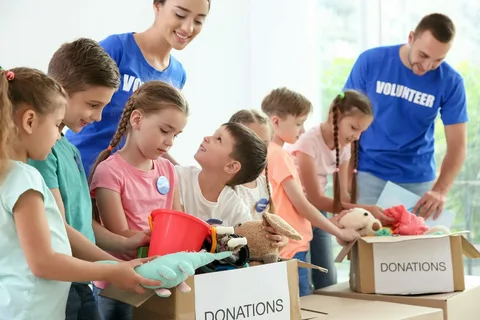Planting Seeds of Kindness: Getting Children Involved in Volunteering
You know that moment when your four-year-old insists on giving their sandwich to the homeless person on the corner? Or when your eight-year-old asks if they can use their allowance to buy dog food for the animal shelter? Those moments aren’t accidents – they’re glimpses of your child’s natural compassion shining through.
This is exactly why childhood is the sweet spot for introducing volunteering. Your kids haven’t yet learned to look the other way or assume someone else will handle the world’s problems. They still believe they can fix everything, and honestly? That’s a beautiful thing to nurture.
Families transform when they start volunteering together. The kids stop whining about being bored on weekends because they’re too busy making a difference. Parents rediscover their own sense of purpose. It’s like watching a family find their rhythm together.
What Works For Your Family
If we’re being honest, dragging a cranky toddler to a three-hour volunteer shift isn’t doing anyone any favors. The secret sauce is matching charitable service programs to where your kids are right now, not where you wish they were.
Your preschooler might last twenty minutes at a food bank, but they’ll spend an hour decorating cards for hospital patients. There have been three-year-olds who couldn’t sit still for story time, but become completely absorbed in sorting toys for donation. They love the sorting, the organizing, the feeling of being helpful.
Elementary kids are your secret weapon volunteers. They’re old enough to understand that not everyone has what they have, but young enough to think they can single-handedly solve world hunger. Channel that energy! They’ll read to kindergartners with the enthusiasm of a Broadway performer and pack care packages as if they were assembling them for their best friends.
Teenagers? Well, they’re going to have opinions. Strong ones. Let them. When your fourteen-year-old gets fired up about climate change, help them find an environmental cleanup group. When they’re passionate about social justice, connect them with organizations doing that work. Their passion will surprise you.
Meaningful, Not Mandatory
Families who’ve made volunteering stick state it’s never about forcing participation. It’s about creating experiences that matter.
Your kids are going to ask the hard questions. “Mom, why don’t these people have homes?” “Dad, why are there so many animals without families?” Don’t panic when these conversations happen. They’re actually golden opportunities to help your children understand the world beyond their own experience.
There’s the story about a six-year-old who started crying at the food bank because he couldn’t understand why kids his age were hungry. Instead of rushing to fix his sadness, the mom sat with him and explained how their work was helping. He went home that day and emptied his piggy bank to buy peanut butter for the next visit.
Let your kids feel the weight of what they’re witnessing. It’s not about overwhelming them – it’s about helping them develop genuine empathy.
Keeping It Up In The Long-Term
You don’t need to become volunteer warriors overnight. Start small and build momentum. Maybe it’s helping at your child’s school harvest festival, or spending one Saturday morning a month at the animal shelter.
The magic happens in the routine. When volunteering becomes as normal as soccer practice or piano lessons, your kids stop seeing it as optional. It becomes part of who they are, not just something they do.
Consider the family that’s been reading to seniors at their local nursing home for three years. The residents know the kids by name now, and the kids have learned to slow down and listen to stories from another generation. Those relationships? They’re changing everyone involved.
Trickle Down Altruism
Here’s the beautiful truth about raising children who volunteer: they become adults who can’t imagine doing anything else. They grow up knowing that their hands can help, their voices can advocate, and their presence can comfort.
Your kindergartener who helps pack school supplies might become the teenager who organizes supply drives. Your middle schooler who walks shelter dogs might become the adult who fosters rescue animals. You’re not just creating volunteers – you’re raising humans who understand their place in the larger story of their community.







